A common question for membership organisations is: "What is community, and why should I invest in it?"
Here are 12 ways member organisations are getting value from community:
- Member acquisition and member growth
- Member retention and loyalty
- Improved member insights
- Member networking
- Supporting and diversifying revenue/income streams
- Adding value to your events program
- Supporting special interest, regional groups or different member tiers
- Supporting Continuing Professional Development and your training programs
- Creating sponsor or partner value
- Cutting through noise and information overload
- GDPR compliance and data privacy assurance for your members
- Define and develop your member benefit offering
And read on for:
What is an online or virtual community?
How can member organisations resource communities?
Join Member Association Collective – a free peer community for people working at membership organisations
What's the ROI (Return on Investment) of community for member organisations, associations, institutes, unions, guilds and other professional bodies?
At Guild we home communities, groups and networks for thousands of global membership organisations and association members, including CIPD, PRCA, Marketing Society, National Education Union (NEU), IPIA, Agency Hackers, Trade Association Forum, Renewd and SISO.
These member organisations have put community at the heart of their membership proposition and are successfully generating value and Return on Investment (ROI).
So let’s look at some of the ways member organisations are getting value from community:
1. Member acquisition/member growth
Associations, unions, institutes and other member organisations rely on recurring income via paid subscriptions. For many, member acquisition and growth are required to create a secure financial footing.
New members are also important to a membership organisation’s continued relevancy and survival.
All membership organisations require a stream of new joiners – they bring energy, new perspectives and new skills. They also replace members who have come to the natural end of the membership lifecycle - perhaps retiring or changing careers.
Communities can help with acquisition and serve as a helpful window into what a paying member can expect from joining a membership organisation – a well tested ‘try before you buy’ tactic.
If your community is open to non-members, sharing links and previews of firewalled content can increase their interest in joining. 'Social proof' in the form of conversations is an incentive to invest in membership.
A great example of a membership organisation using community to highlight resources, guides, events and thought leadership to prospective members is the PRCA. This ‘membership shop window’ approach complements a number of other member-only specialist communities that they host on Guild.
We’re increasingly seeing member organisations creating discoverable groups or offering trial periods for membership and successfully recruiting new members from Guild’s growing network of professionals in many sectors.
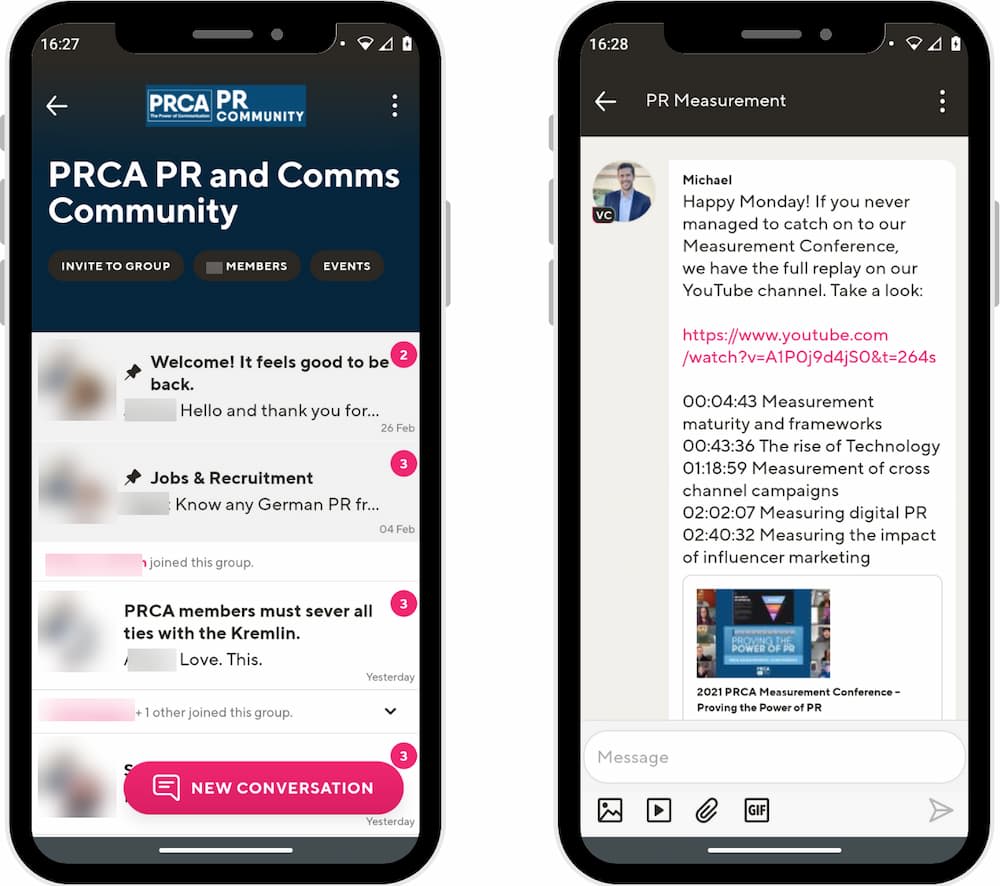
2. Member retention and loyalty
Member retention is a goal for most membership organisations.
Securing recurring revenue and ensuring the most talented members continue to engage, connect and amplify content and messaging is the lifeblood of professional membership bodies, institutes, associations, unions etc.
Accessing a year-round, always-available community space for connecting and networking with other members outside of events and meetups is a key driver of member loyalty/retention.
Loss aversion is a powerful motivator. Many of us will want to avoid losing access to a valuable peer community if we don’t renew.
Lisa Collins, former Head of Membership Engagement at the IABM and advisor to membership organisations and associations, explains:
“For membership organisations, virtual communities are the 'glue' that binds members together outside of events and meet-ups.
The true power of these online communities is that members can connect and collaborate in their own time and reach out to other members when they need support, advice or a sounding board from peers.
Member organisations can fall into the trap of thinking that it’s all about the content they provide and not the context or the safe space they provide for members to connect and support each other.
Put community at the heart of your member retention strategy, and you’ll see an enormous impact on member perception of your value to them.”
The Chartered Institute of Personnel and Development and the National Education Union (NEU) shared similar views at the Guild Community Summit 2022.
Mike Joslin, NEU's Lead Marketing Officer stated that community has had a hugely positive impact on member sentiment, with 75% of members finding their REN: Remote Education Community “extremely helpful.”
3. Improved member insights
All businesses have an ever-increasing need to capture valuable, actionable insights about customers to shape decisions about their brands, products, campaigns, and services.
And it's no different for membership organisations.
Consider the massive amount of data that social media platforms collect - but don’t share.
Smart brands and businesses create online communities not only to communicate with their prospects and customers, but to capture rich insights about their challenges, pain points, and successes. Community conversations can also help clarify the topics that create the most discussion and engagement. They can also show how sentiment changes over time.
This insight data is also available to member organisations who create communities. This is 'zero-party data' and 'first-party data' that is going to be increasingly valuable when layered with other sources of member data.
Mike Joslin is Lead Marketing Officer at the National Education Union, one of the largest member organisations in the UK with over 460,000 members. At the Guild Community Summit, he showed how the NEU collates member insights from multiple data sources, including polls, surveys, Zoom, social media and its own Guild communities.
This data is used to ensure that the NEU’s campaigns and messaging are micro-targeted to members who are most likely to be interested, and most likely to act.
The NEU is focused on ensuring everything it does is GDPR-compliant to fully respect the privacy and data security of its members.
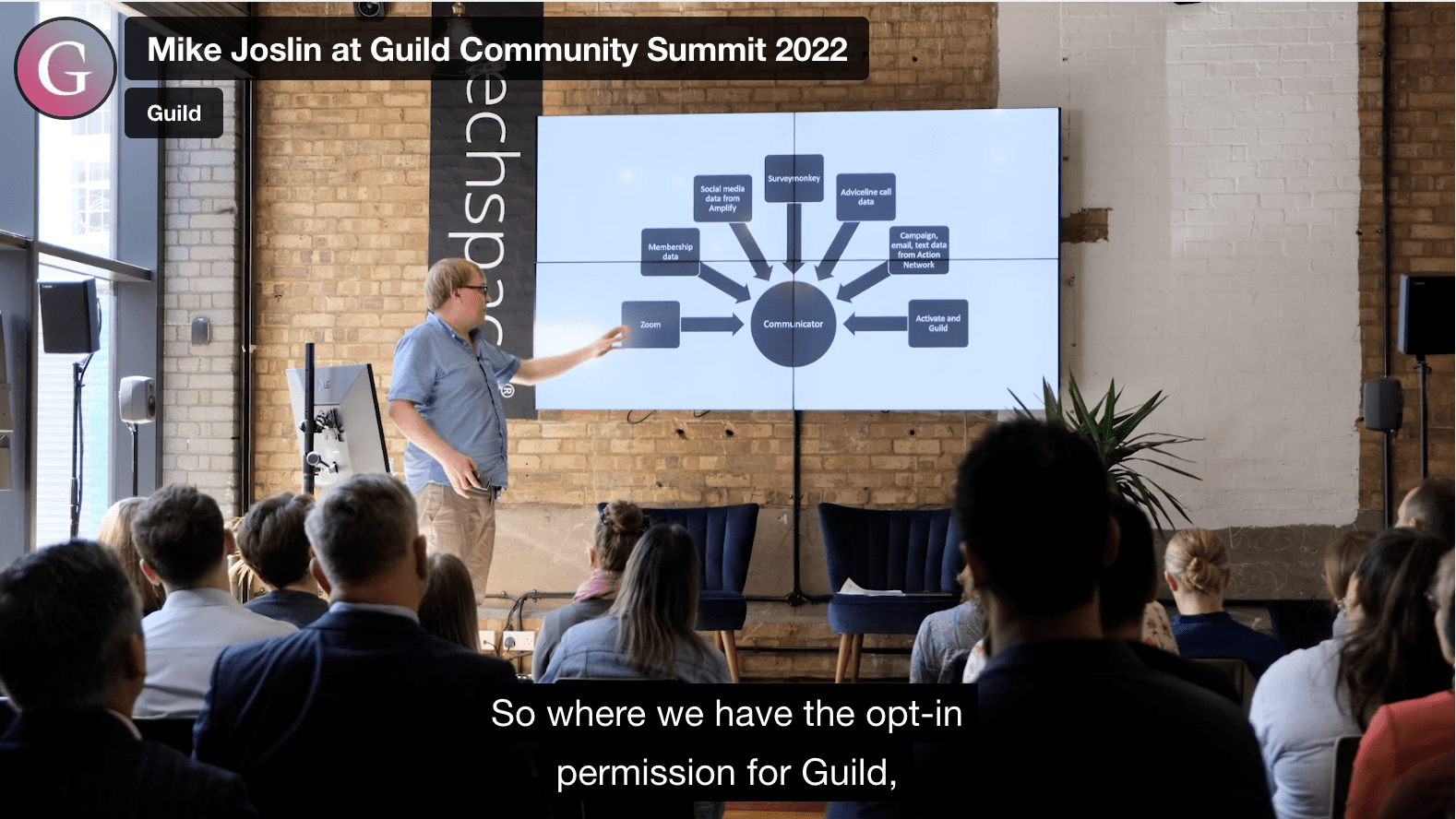
4. Member networking
Most of the membership associations we work with at Guild want to help their members network outside of the events, meetings, training and other gatherings that they organise.
One of the biggest benefits of membership is being able to network with others.
Virtual community platforms like Guild provide your members with safe spaces to connect, network, chat, message, collaborate and do great things together all year round.
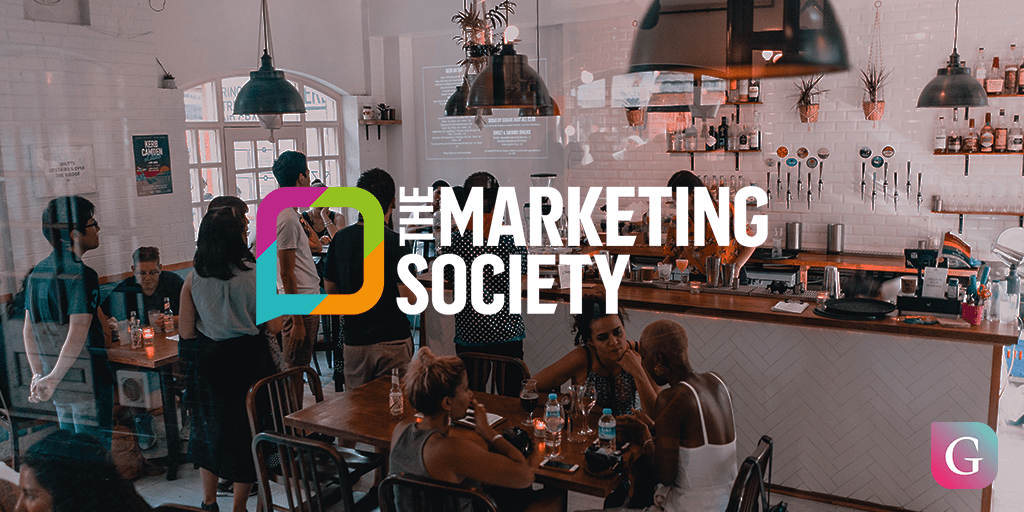
5. Supporting and diversifying revenue/income streams
Building the opportunity to join a community as an additional layer of member benefits could be a way to diversify income streams. Community can become a business model in itself. This is the model for many newer member organisations.
Agency Hackers is an example of a membership organisation for the digital age.
They attract leaders of independent agencies in advertising, creative, e-commerce, digital to their high-quality, thoughtful peer community. Today it has nearly 900 independent agency leaders engaging in its active member community on Guild.
Founder Ian Harris explains:
“We get so much value from our members having a proper forum to speak to each other. Slack and WhatsApp are free, but are awful for thoughtful, calm discussions. Guild is smooth, stable, there are no ads.
If your community matters to you, then your community platform shouldn’t be an afterthought. I respect my community members and their needs matter to me. Choosing a dedicated platform that works for them makes so much sense.”
Community is a ‘sticky’ value-add to any subscription model.
The CIPR, CIPD, PRCA, IPIA, NEU and Marketing Society all offer communities on Guild to their members as part of their membership. Many use their communities to highlight other revenue-generating products such as training, courses or events.
6. Adding value to your events program
Events are an important part of any membership organisation’s model, whether they are in-person, virtual or hybrid.
How many times have you hosted or attended events or awards when you wish you could continue the amazing discussions prompted by brilliant speakers, roundtables or workshops?
A community provides you with a natural space for your members to continue the conversations, collaboration and networking.
For example, the Trade Association Forum (TAF) used its Guild community to engage with members who couldn’t attend a major event due to transport strikes, and to continue discussions with those who did.
TAF CEO Emily Wallace explains:
“Events like our Best Practice Exchange offer our members great opportunities to network and listen to business experts, politicians and each other.
This year we faced a train strike, but because of our Guild community we were able to make sure that those members who couldn’t attend could still feel involved.”
Your community can also support the promotion, creation and curation of events. Community discussions can highlight hot topics, hidden expertise, potential speakers and much more.
For more on this, see our Events and Community Best Practice Guide.
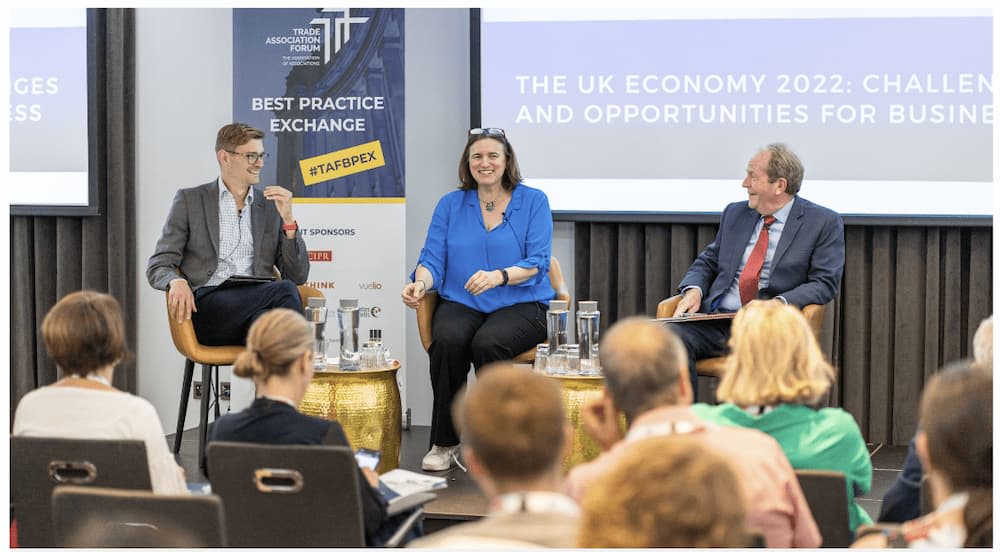
7. Supporting special interest, regional groups or different member tiers
Most mid-sized to large membership organisations will have subgroups, regional groups, member tiers, working groups, councils or special interest groups.
Creating a single, large community is a great approach for many, but creating smaller, more focused groups and communities for members with shared interests and goals can be very powerful.
A community platform that is flexible enough for you to develop multiple groupings is important for many membership organisations.
Ensure that you have governance and oversight of these and don’t allow WhatsApp ‘whack a mole’ to happen in your organisation, where groups pop up without permission or governance.
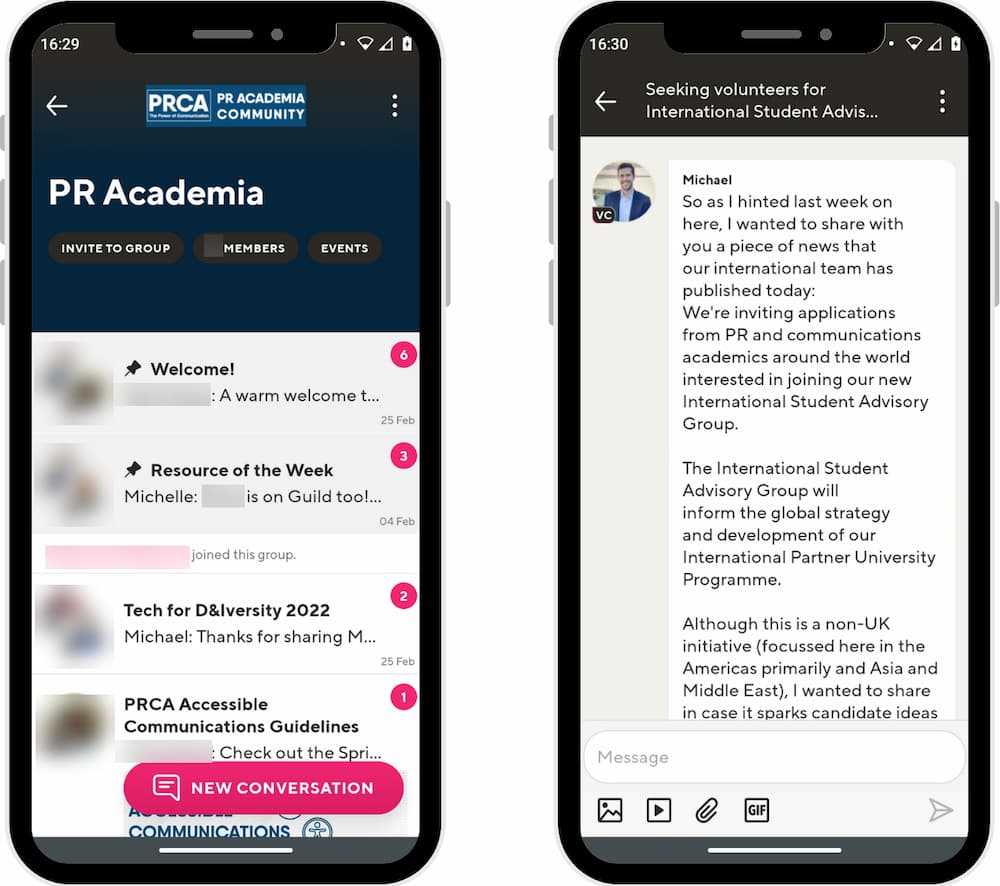
8. Supporting Continuing Professional Development (CPD) and your training programs
Many membership associations provide training, courses and all forms of Continuing Professional Development (CPD) to support their member base.
Communities can play an important part in promoting training and events that can credit attendees with valuable CPD points.
But member organisations should also put community at the heart of their learning programs.
For example, longer courses and training can have their own cohort communities or alumni communities. These are powerful ways to help delegates learn together, support one another and gain greater professional value outside of the classroom or learning environment.
Socially Mobile is a PR school set up by two former Chartered Institute of Public Relations (CIPR) presidents, Stephen and Sarah Waddington. The cohort-based learning programme and community supporting is designed to create a more diverse set of PR industry leaders.
Every cohort has its own learning and peer support community. After graduation, the students are invited to the Socially Mobile alumni community – a powerful, growing network of new, diverse PR and communications leaders.
Leanne Hughes, Communications Lead, NHS and Socially Mobile graduate explains the value to her and other graduates of a learning and alumni community:
“it’s [the community on Guild] a positive safe space to connect with the cohort and build up a bit of solidarity and support. It's good to have a platform away from normal social media platforms to share information in confidence with each other."
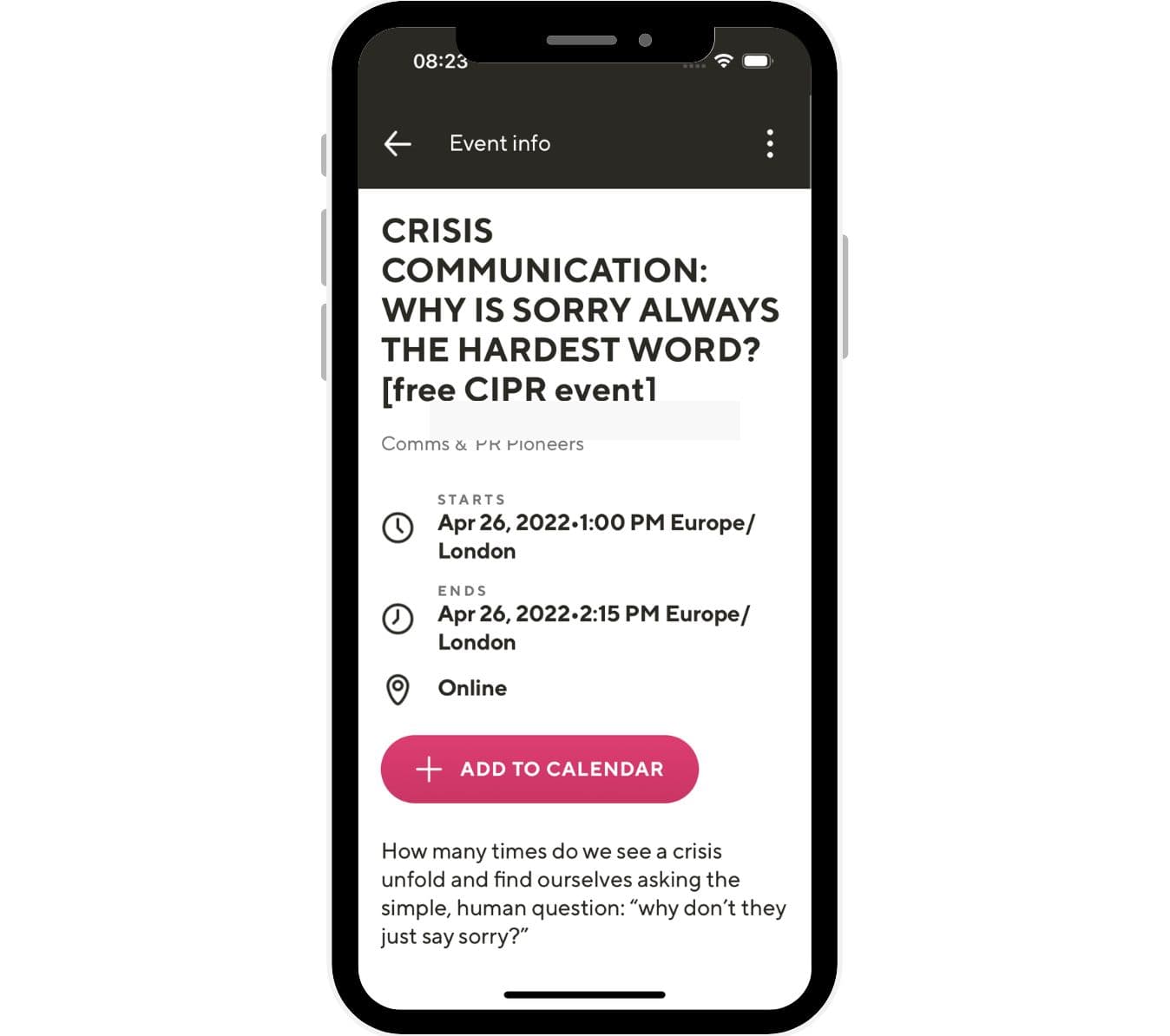
9. Creating sponsor or partner value
Many membership organisations attract sponsors in the form of technology companies, professional services and other partners who wish to target their member base as potential customers.
Communities offer multiple benefits for your sponsors or partners. You can invite them in to demonstrate authority on a topic. Presence in a community, in the form of perhaps a video livestream event or an Ask Me Anything (AMA) helps build awareness with a highly-qualified target market.
In some membership association communities, sponsors or partners can showcase their expertise and credibility year-round. And a community is an ideal channel to cross-promote content, events, etc., while providing member value.
Thoughtful, tailored sponsor partnerships can add value for both the community members and the sponsor or partner brand.
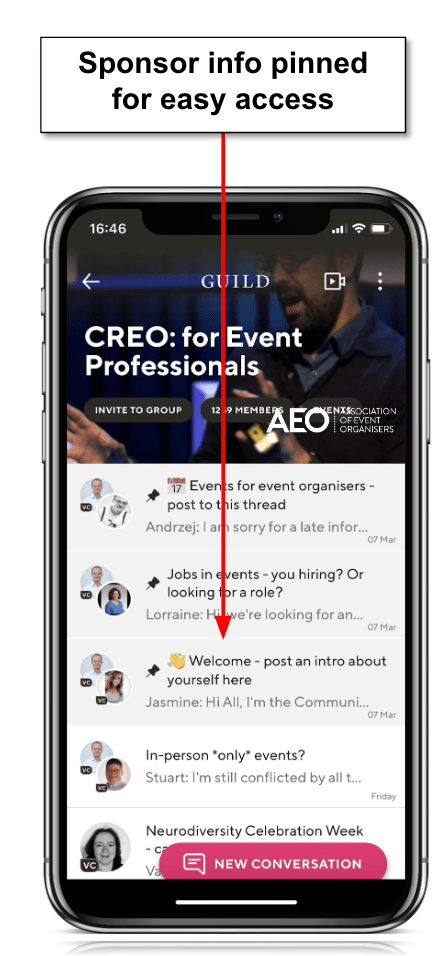
10. Cutting through noise and information overload
There are only so many events, reports, catch-up videos, and social media posts that anyone can read. There's no shortage of competition for audience attention and social media is a space that is especially 'noisy'.
A respected marketer described LinkedIn recently to me as a "bin fire. It’s full of ads, salespeople and people sharing personal things that probably shouldn't be connected to where they work".
They went on to say that their LinkedIn Company Page had limited reach and the only reason they personally use it is for recruitment.
LinkedIn today is a space where it is increasingly hard to appear in a users feed without resorting to algorithm-beating tactics that rarely deliver the right professional message to your members and prospective members.
Take a look at your own reach and engagement numbers on your membership organisations' social media accounts.
Important messages simply aren't reaching their intended audiences on LinkedIn and Twitter for most membership associations.
Pick any membership body, say The Association of Change Management Professionals.
Let's take a look at what engagement rates look like on one of their typical posts on their LinkedIn Company Page.
With almost 19,700 followers, you'd expect a higher engagement rate than 8 people liking and sharing a post - that's a 0.04% engagement rate.
The same post on their Facebook Page has zero likes from 3,200 followers and 2 likes on Twitter from 3,192 followers - suggesting that the tweets simply aren't reaching their members, prospects and other stakeholders following them.
Join CHG MGMT INSIGHT: Masterclass Series! Catch Donna Brighton’s session on “Culturally Intelligent Change: How to use the Power of Culture to Accelerate Change Management Success.” Participants get access to the video content through April 28, 2023. (https://t.co/cYQJuYTvZD) pic.twitter.com/FJy7p4aBdK
— Association for Change Management Professionals (@acmpglobal) September 14, 2022
Community can help cut through that noise and ensure that important messages and content get seen.
Communities are ad-free, salesperson-free, algorithm-free.
Your members are not bombarded with competing information. They can take time to reflect, discuss, forage, explore, read, and understand what you’re sharing in your communities.
11. GDPR compliance and data privacy assurance for your members
Many member organisations are unaware of the potential legal and data privacy issues when using consumer messaging apps such as WhatsApp for their member groups/communities.
Choosing a community platform like Guild with GDPR compliance and a respectful approach to data will show your members that you care about their right to data privacy.
And if members trust you to do right by their data, then they are more likely to engage, connect, network and share - which in turn drives insights, perception of member value and loyalty.
12. Define and develop your benefits offering
Corporates use customer communities to help shape their R&D and product development. Membership organisations can use community intelligence to refine membership benefits that attract new members, and help with member retention.
Lisa Collins, former Head of Membership Engagement at the IABM and advisor to membership organisations and associations says: "I believe that the use of communities can help member organisations define and develop their own benefits offering to members.
Listening to your community and getting direct feedback from members on their pain points means you can develop your offering accordingly."
How can member organisations resource communities?
Some member organisations will extend the role of community manager to those already managing social media channels - usually colleagues working in comms, marketing or member engagement teams. Some use consultants and agencies.
Many work with member volunteers with specific roles, skills and interests to host and manage special interest groups, regional groups or sectoral groups.
Stephen Pobjoy at the CIPD explained at the Guild Community Summit in 2022 how they work with a combination of CIPD staff, member volunteers and partners such as the NHS and the Civil Service:
"All of the groups are run slightly differently. You can't have a 'sausage factory' approach. When we are rolling these groups out, we are very careful to think what their customer needs are and what's appropriate."
A community manager needs credibility and expertise. But they also need to have people skills, organisation, empathy and strategy.
Like social media management, you can’t expect a junior member of staff to make your community a success. Investing in dedicated community staff or training, for example, our free community strategy training resources can pay off.
Funding for a community frequently comes from the marketing, member engagement or communications/PR budget. In membership associations, dedicated community teams are increasingly common.
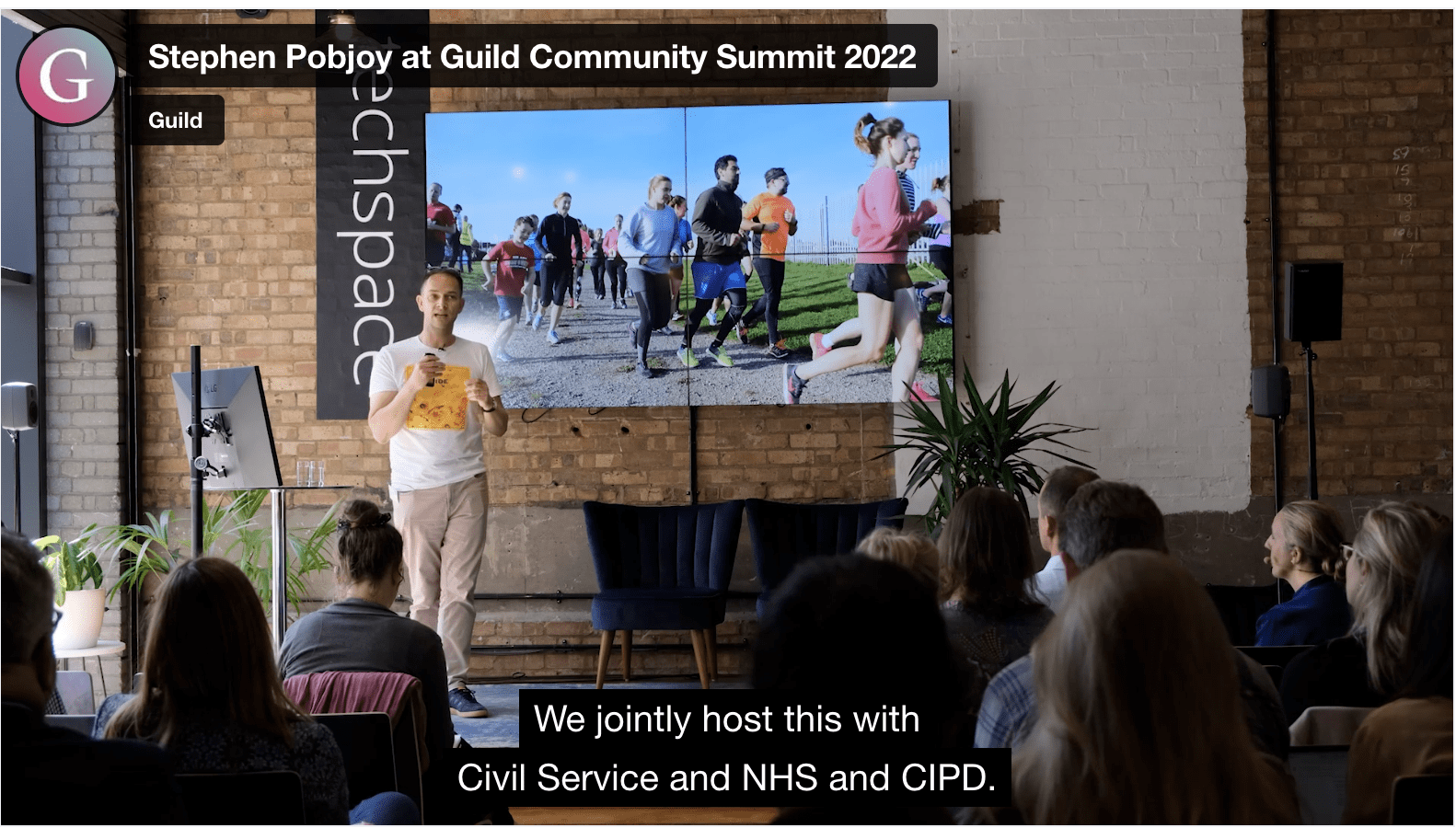
What is an online or virtual community and what does it mean for member organisations?
An online community (also known as a virtual community, internet community or digital community) is where people come together digitally to interact, share knowledge and build relationships.
Virtual communities offer members a safe place to discuss common challenges, collaborate, network, find answers and share stories.
A virtual community - unlike social media with its algorithms - gives members a platform for an equal share of voice.
Online communities can be broadly classified into 5 categories or pillars.
At Guild, we call these the 5 Ps of Community (Communities of Practice, Play, Product, Place, Purpose).
Most membership organisation communities naturally fall under 'Communities of Practice' - professional communities usually restricted by sector/industry/goal.
Communities can be members-only, e.g. The Marketing Society's Coffeehouse on Guild. Or they might be created to drive member acquisition by sharing thought leadership, highlighting members and the value of 'belonging'.
Building communities on community platforms like Guild helps member organisations to group members together, and engage and network with experts and peers. Belonging to a member community continually highlights the benefits of being a paid-up member.
Many membership organisations develop sub-communities around special interests, (e.g. inclusivity, sustainability), roles or career stages (e.g. 30 under 30) or country/region/chapters, (e.g. US - Northeast, UK - West Midlands) etc.
On Guild, there are thousands of private online communities of practice in law, marketing/advertising/communications, finance and investment, sustainability, technology, medicine, engineering, healthcare, transport, construction, media and entertainment, retail, education, arts and culture and more.
Talk to us or arrange a demo if you are interested in creating communities for your membership organisation.
Further suggested reading: What is an online community?
More about the value of community and community strategy
How to combine Events with Community: best practice guide
How to align Community to your organisation or business goals
The ingredients for a successful community
Choosing the right community platform
Featured membership associations using Guild for member communities
NEU (National Education Union)
Addictive - Fix Ad Tech / Perfect Storm
British Equestrian Trade Association
Join the Membership Association Collective
This free community brings membership organisations from around the globe together.
It's open to anyone working in a membership body interested in sharing best practice, ideas, inspiration, interesting content and resources around member engagement.
Get feedback from the group on ideas and initiatives, develop partnerships and make useful industry contacts and connections. Regular events and meet ups will let you build your knowledge and network. Join the Membership Association Collective today.

Want to learn more about community strategy and community skills?
Guild Community Collective is a free community for community and social media managers, builders, and strategists. If you're taking your first steps in building a community you're just as welcome.

Try Guild 🤝
See for yourself how the Guild experience is different to WhatsApp, Slack, LinkedIn or Facebook Groups.
Guild is a safe space to connect, communicate and collaborate with others.
Join us on a platform that is purpose-built for creating groups, communities and networks on mobile.